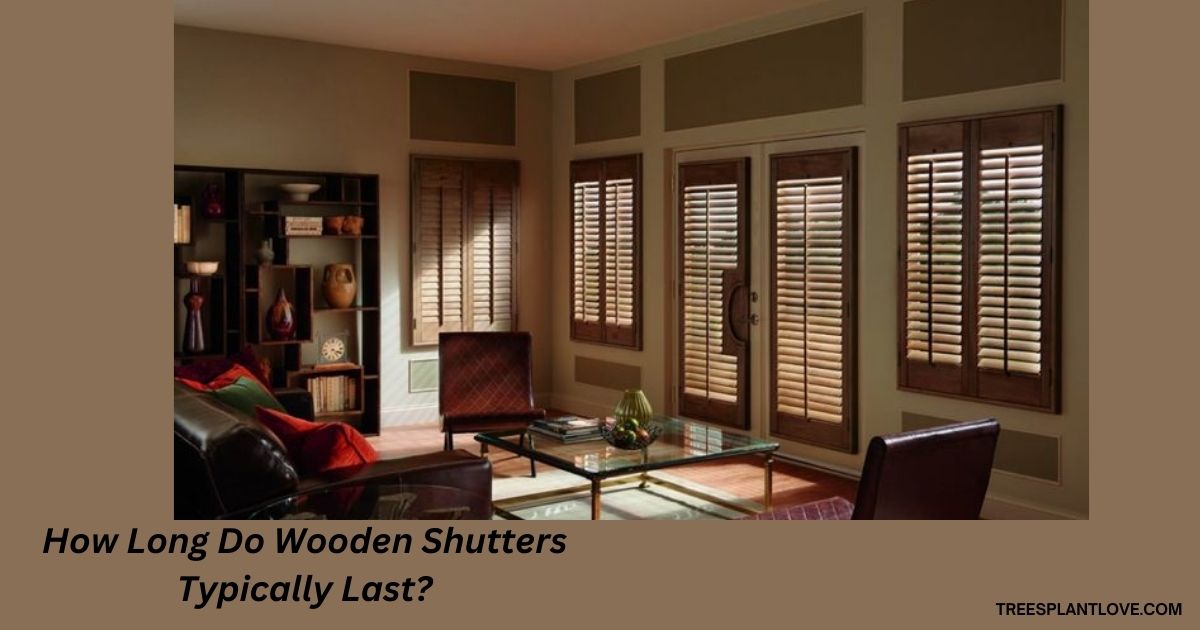
How Long Do Wooden Shutters Typically Last? Maximize Durability & Lifespan
How Long Do Wooden Shutters Typically Last?: Wooden shutters are an elegant and timeless choice for window treatments. They are favored for their aesthetic appeal, durability, and versatility. However, one of the most important factors homeowners consider when choosing wooden shutters is their longevity.
How long can you expect your wooden shutters to last, and what factors influence their lifespan? In this article, we’ll explore the lifespan of wooden shutters and provide tips on how to maximize their durability.
The Typical Lifespan of Wooden Shutters
On average, wooden shutters can last anywhere from 20 to 30 years, depending on the quality of the wood, the type of finish, and the maintenance they receive.
Some high-quality wooden shutters, particularly those made from hardwoods like oak or mahogany, may even last longer. Proper care and upkeep can extend their lifespan, while neglect and harsh conditions can shorten it significantly.
Factors That Influence the Lifespan of Wooden Shutters
- Type of Wood
The type of wood used in making the shutters plays a major role in their longevity. Solid hardwoods like oak, cherry, and mahogany are more durable and resistant to wear and tear than softwoods like pine or cedar. Hardwoods are also less likely to warp, crack, or fade over time, making them a more long-lasting option. - Quality of Craftsmanship
High-quality craftsmanship is essential for the longevity of wooden shutters. Custom-made shutters, built to fit your windows perfectly, tend to be more durable than mass-produced options. The precision in the construction of each slat and frame ensures that the shutters will function smoothly and stand the test of time. - Exposure to Sunlight and Humidity
Exposure to direct sunlight can cause the wood to fade or dry out, potentially leading to cracks or warping. Similarly, high humidity levels can cause wood to swell and contract, which may also cause distortion or damage over time. To minimize these effects, it is recommended to use wooden shutters in areas where they won’t be subjected to extreme temperature changes or direct sunlight for prolonged periods. - Maintenance and Care
Proper maintenance is key to ensuring the longevity of your wooden shutters. Regular cleaning, occasional re-coating, and repairs as needed can keep your shutters looking fresh and functioning properly for decades. Dusting the shutters periodically with a soft cloth and avoiding harsh cleaning agents will help preserve the wood’s natural sheen and protect the finish. - Location and Usage
The location of your shutters plays a significant role in their longevity. Shutters installed in areas that receive constant exposure to moisture, like kitchens or bathrooms, may experience wear and tear more quickly. Likewise, shutters on frequently used windows may require more attention than those on rarely opened windows. If you live in a coastal area where salt air can be harsh on wooden furniture and fittings, this could also shorten the lifespan of your shutters.
How to Extend the Lifespan of Wooden Shutters
To ensure your wooden shutters last for decades, regular maintenance is a must. Here are some tips on how to extend their lifespan:
- Clean Regularly
Regularly dust and clean the shutters using a soft, lint-free cloth or a microfiber duster to prevent dust and debris from accumulating. For a deeper clean, use a damp cloth with mild soap and water, making sure to dry the shutters thoroughly to avoid moisture damage. - Recoat and Refinish When Necessary
Over time, the finish on your wooden shutters may fade or wear down. Reapplying a protective coat of varnish, lacquer, or paint can help maintain their appearance and protect the wood from moisture and UV damage. Consider refinishing the shutters every 3-5 years, depending on the level of wear. - Inspect for Damage
Check your shutters regularly for signs of damage, such as warping, cracks, or loose slats. Addressing issues early on can prevent further damage and help extend their lifespan. If you notice any problems, consult a professional for repairs to avoid further complications. - Control Humidity and Temperature
To prevent moisture-related damage, it’s important to maintain consistent humidity and temperature levels in your home. Using a dehumidifier or air conditioner in areas with high moisture content can help protect the wooden shutters from expansion or contraction due to humidity. - Install in the Right Location
If possible, avoid placing wooden shutters in areas that receive constant direct sunlight or excessive moisture. For instance, while they look great in living rooms and bedrooms, you might want to consider alternative window treatments for bathrooms or kitchens.
Signs That Your Wooden Shutters May Need Replacement
While wooden shutters are known for their durability, there comes a time when even the best shutters may need replacing. Some signs that your shutters may be nearing the end of their lifespan include:
- Severe Warping or Cracking
If the shutters have become warped or cracked beyond repair, it may be time for a replacement. This can occur due to excessive moisture or temperature fluctuations. - Fading or Peeling Paint
If the paint or finish has significantly faded or peeled, and refinishing no longer restores their appearance, a replacement may be necessary. - Difficulty Opening and Closing
If your shutters are no longer functioning properly—such as slats not moving smoothly or frames becoming misaligned—it could indicate that the internal mechanisms have worn out beyond repair.
Conclusion
Wooden shutterscan last for decades if cared for properly. On average, you can expect them to last 20-30 years, depending on the quality of the materials, the level of care, and environmental factors.
To maximize their lifespan, it’s important to clean and maintain them regularly, avoid excessive exposure to the elements, and address any issues promptly. By doing so, your wooden shutters will continue to enhance the beauty and functionality of your home for many years to come.

Leave a Reply